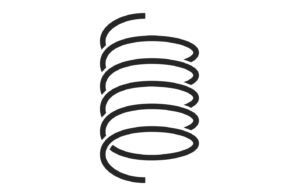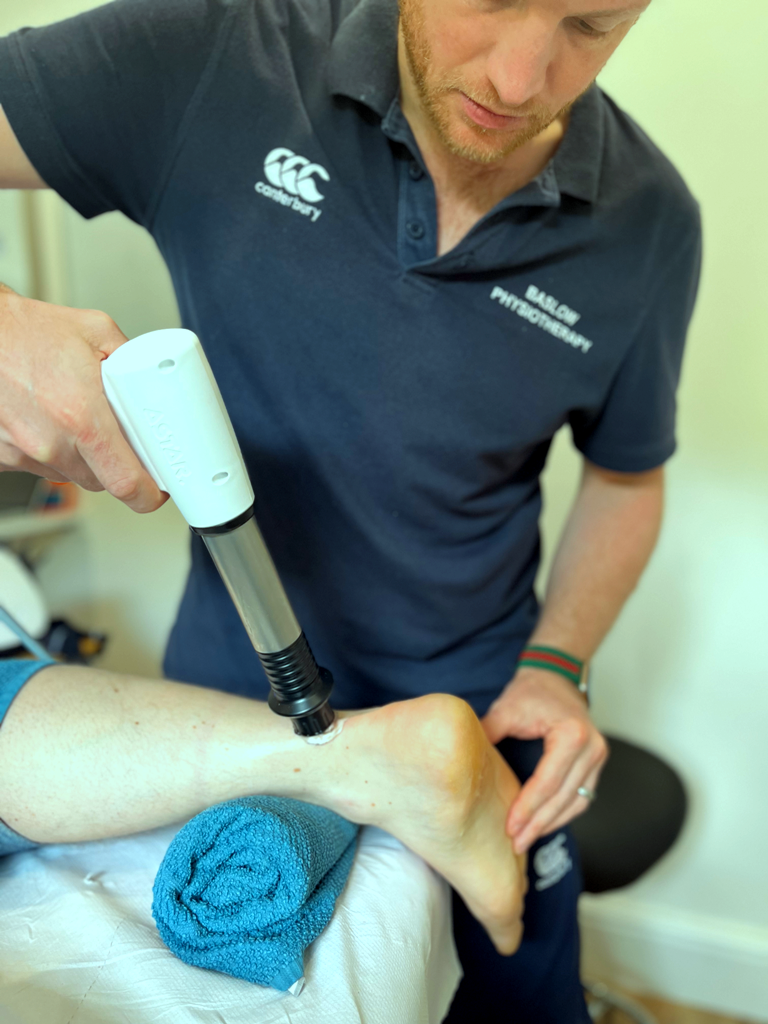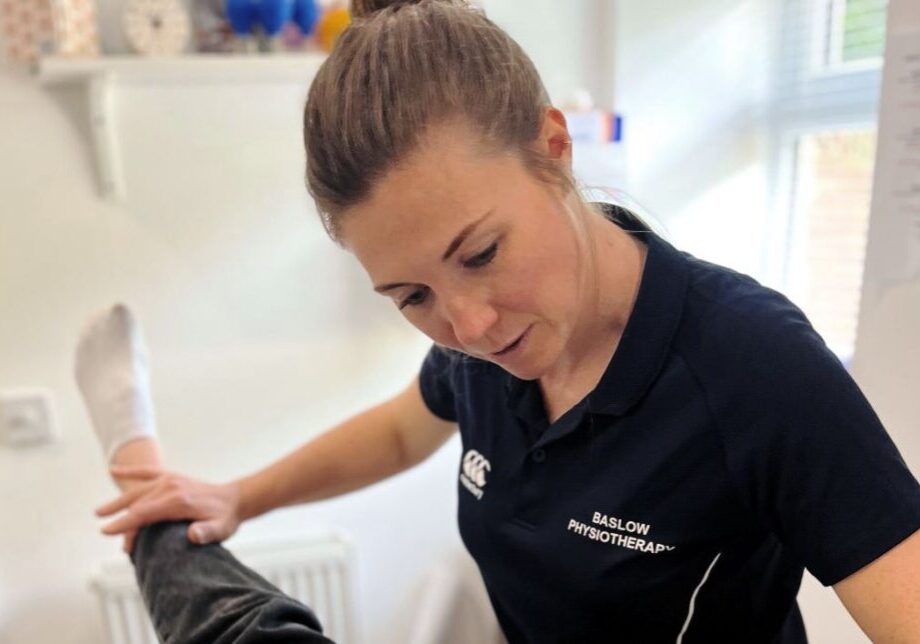Is a Tendon Injury Stopping you Exercising?

Tendons injuries are common and can impact on us all differently. They can be very painful and can often leave people frustrated in not knowing how best to treat them or what to try next. In this blog, I’m going to explain what a tendon is, how it can be injured and how to manage a tendon injury, so you can change the symptoms you are getting and return to the exercises you love!

What is a tendon and why is it important?
Tendons are made of collagen and attach muscles to bones all over the body, similar to springs they are strong and flexible.
Areas of the body often affected include:
- Plantarfasciitis (under foot)
- Achilles tendon
- Patella tendon (Front of knee)
- Greater trochanteric lateral hip/gluteal tendons
- Rotator cuff tendons in the shoulder
- Tennis elbow (outside of the elbow extensor tendons)
- Golfers elbow (inside of the elbow flexor tendons)
These are areas of the body that lots of us will notice pain in at some point in our lives for various reasons.
Injury to Tendons: What Causes Tendon Damage?
There are two primary types of tendon injuries. One can happen gradually due to small, repetitive injuries over a long period, known as microtrauma. For example, constantly typing at your computer for extended periods of time without proper breaks can lead to conditions like tennis elbow. The other type is macrotrauma, which involves a sudden, forceful incident causing immediate and specific pain. An example of this is sprinting up a hill and feeling a pop in your Achilles tendon at the back of your ankle.
Both these methods of injury will cause pain and a reduction in function and will need to be managed slightly differently.
Factors that Increase the Risk of Tendon injuries:
- Significant change in loading, for example, if you normally run 5km and then increase your training over a short period of time to running a half marathon type distance. This increase in mileage can make tendons unhappy.
- Age. As we get older, changes in our body's hormones can impact health and raise the risk of injury. For instance, a decrease in the hormone oestrogen, common in peri and post-menopausal women, can result in diminished repair of tendon cells. This may be a factor contributing to the increased occurrence of gluteal tendinopathy on the outer hip in this age group.
- An increased BMI and eating a high sugar processed diet can lead to general increased inflammation in the body.
- Autoimmune conditions such as Rheumatoid arthritis can cause increased risk of damage to tendons.
- Research suggests that increased use of steroids and the use of a certain types of antibiotics called quinolones can, in fact, cause tendon damage.
Assessing the integrity of a tendon and how our bodies may have adapted is important. A thorough clinical assessment should be carried out, and for some tendon injuries, a diagnostic ultrasound scan can be helpful to look at the tissues more closely.
We can arrange this at Baslow Physiotherapy for you if required.
Tendon Injury Symptoms: What are the main symptoms of a tendon injury?
Tendons often experience stiffness and soreness when subjected to activity after a period of rest, especially after sleep or extended sitting. In a similar way to a spring, this stiffness tends to improve as they warm up. When tendons are irritated, they don't respond well to compression. For instance, stretching the Achilles tendon while walking uphill or descending stairs may cause discomfort in the patella tendon at the front of your knee.

Tendon Injury Treatment: How best to treat tendinopathies
There are a few factors to consider during tendon injury treatment, such as individual risk factors, as well as the onset of symptoms (how and when) and the severity of the tendon. However in general, a combination of hands-on therapy, electrotherapy and exercise are often used to improve pain, and most importantly a graded strengthening loading plan:
Hands on tendonitis physiotherapy can include: massage, frictioning the tendon and joint mobilisations. These should always be comfortable and within pain limits.
Electrotherapy can include: Shockwave therapy, therapeutic ultrasound or laser to stimulate tissue healing.
Exercise: The key is a gradual and structured strengthening program. This involves adjusting the load based on symptoms and following an tendon injury exercise plan that progresses from low static resistance to heavier loading, culminating in dynamic explosive exercises, before targeting specific sporting or functional objectives.
KEY POINTS:
- Tendon pain is relatively common, it can occur at any age, but often affects people more as they get older.
- Tendon injury can occur after a significant trauma or following a repetitive strain micro trauma both can cause the tendon to become painful.
- Management depends on identifying risk factors, correcting abnormal movements, stimulating the healing process and gradually loading the tendon.

If you feel we could help you
Book your first assessment
